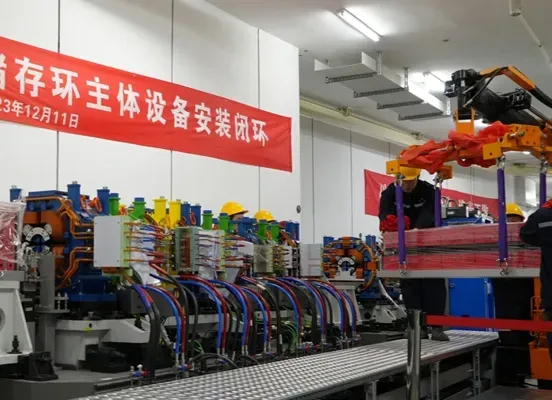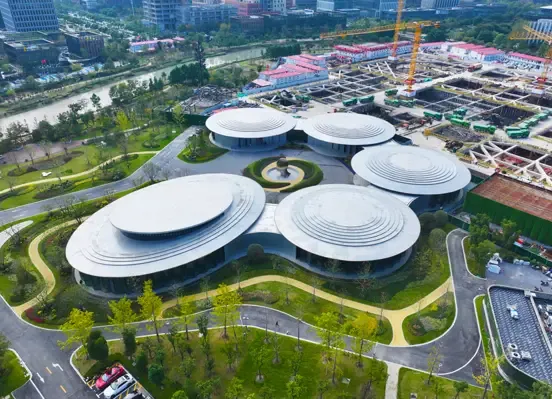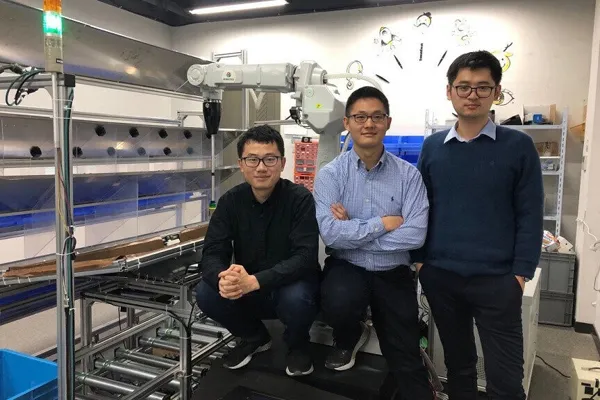The main body of the high-energy synchrotron radiation light source storage ring is installed in a closed loop, and the first beam of light will be emitted in 2024
On December 11, the last magnet in the storage ring of the high-energy synchrotron radiation light source accelerator, a major national science and technology infrastructure project, was in place, marking the closure of the installation of the main equipment of the HEPS storage ring.
The HEPS storage ring is an ultra-low emittance electron ring accelerator with a beam orbit circumference of approximately 1360.4 meters. It is the third largest light source accelerator in the world and the largest accelerator in China. The area within the ring is approximately the size of more than 20 football fields. Store high-energy and high-quality electron beams while producing synchrotron radiation.
Pan Weimin, the commander-in-chief of the HEPS project, said that as a core component of my country's first fourth-generation synchrotron radiation device, the storage ring is the part of HEPS that has the largest scale, the highest development precision, and the most difficult components. Among them, equipment such as ultra-high gradient four-pole magnets, power supply digital controllers, high-precision current sensors and high-stability magnet supports have reached the international advanced level.
Lin Guoping, chief craftsman of HEPS, said that in order to ensure accuracy and efficiency, after each system equipment has completed processing and testing, the pre-alignment unit assembly is completed in the laboratory, and the magnet placement accuracy on the pre-alignment unit bracket is achieved to be better than 30 microns. It can be transported to the storage ring tunnel for installation. Depending on the number of magnets in the unit, each pre-alignment unit weighs about 1.7 to 8.5 tons. The installation team faces difficulties such as heavy equipment, dense tunnel equipment, and failure to affect pre-alignment accuracy. Since the beginning of February this year, the storage ring started to install tunnel equipment. It took 10 months to complete the installation of 288 pre-alignment units, 240 bent two-pole magnets, 288 bases and other main equipment throughout the ring, realizing a closed loop of main equipment installation.
HEPS is a major national science and technology infrastructure constructed by the Institute of High Energy Physics of the Chinese Academy of Sciences. It is the core device of Beijing Huairou Science City. After completion, it will become my country's first high-energy synchrotron radiation light source and the brightest fourth-generation light source in the world. One of the synchrotron radiation light sources, it can emit light 1 trillion times brighter than the sun, which helps to analyze the microstructure and evolution mechanism of matter in a deeper level, and provides high-level capabilities for improving my country's national development strategy and original innovation capabilities in the field of cutting-edge basic science and technology. Technology research platform.
HEPS has been under construction since June 2019 and is expected to emit its first light in 2024.





